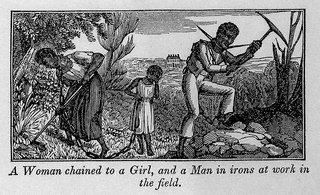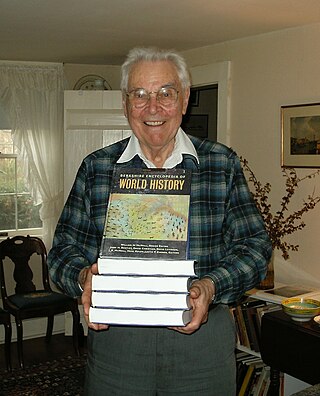Related Research Articles

The United States is a country primarily located in North America. Demographics of the United States concern matters of population density, ethnicity, education level, health of the populace, economic status, religious affiliations, and other aspects regarding the population.

The Great Migration, sometimes known as the Great Northward Migration or the Black Migration, was the movement of six million African Americans out of the rural Southern United States to the urban Northeast, Midwest, and West between 1910 and 1970. It was caused primarily by the poor economic conditions for African Americans, as well as the prevalent racial segregation and discrimination in the Southern states where Jim Crow laws were upheld. In particular, continued lynchings motivated a portion of the migrants, as African Americans searched for social reprieve. The historic change brought by the migration was amplified because the migrants, for the most part, moved to the then-largest cities in the United States at a time when those cities had a central cultural, social, political, and economic influence over the United States. There, African Americans established influential communities of their own. Despite the loss of leaving their homes in the South, and the barriers faced by the migrants in their new homes, the migration was an act of individual and collective agency, which changed the course of American history, a "declaration of independence" written by their actions.

The Panic of 1857 was a financial crisis in the United States caused by the declining international economy and over-expansion of the domestic economy. Because of the invention of the telegraph by Samuel F. Morse in 1844, the Panic of 1857 was the first financial crisis to spread rapidly throughout the United States. The world economy was more interconnected by the 1850s, which made the Panic of 1857 the first worldwide economic crisis. In Britain, the Palmerston government circumvented the requirements of the Bank Charter Act 1844, which required gold and silver reserves to back up the amount of money in circulation. Surfacing news of this circumvention set off the Panic in Britain.

Chicago has played a central role in American economic, cultural and political history. Since the 1850s Chicago has been one of the dominant metropolises in the Midwestern United States, and has been the largest city in the Midwest since the 1880 census. The area's recorded history begins with the arrival of French explorers, missionaries and fur traders in the late 17th century and their interaction with the local Pottawatomie Native Americans. Jean Baptiste Point du Sable was the first permanent non-indigenous settler in the area, having a house at the mouth of the Chicago River in the late 18th century. There were small settlements and a U.S. Army fort, but the soldiers and settlers were all driven off in 1812. The modern city was incorporated in 1837 by Northern businessmen and grew rapidly from real estate speculation and the realization that it had a commanding position in the emerging inland transportation network, based on lake traffic and railroads, controlling access from the Great Lakes into the Mississippi River basin.

African American history started with the arrival of Africans to North America in the 16th and 17th centuries. Former Spanish slaves who had been freed by Francis Drake arrived aboard the Golden Hind at New Albion in California in 1579. The European colonization of the Americas, and the resulting Atlantic slave trade, led to a large-scale transportation of enslaved Africans across the Atlantic; of the roughly 10–12 million Africans who were sold by the Barbary slave trade, either to European slavery or to servitude in the Americas, approximately 388,000 landed in North America. After arriving in various European colonies in North America, the enslaved Africans were sold to white colonists, primarily to work on cash crop plantations. A group of enslaved Africans arrived in the English Virginia Colony in 1619, marking the beginning of slavery in the colonial history of the United States; by 1776, roughly 20% of the British North American population was of African descent, both free and enslaved.

Robert Sengstacke Abbott was an American lawyer, newspaper publisher and editor. Abbott founded The Chicago Defender in 1905, which grew to have the highest circulation of any black-owned newspaper in the country.
Famines in Ethiopia have occurred periodically throughout the history of the country.
Chancellor Williams was an American sociologist, historian and writer. He is noted for his work on African civilizations prior to encounters with Europeans; his major work is The Destruction of Black Civilization (1971/1974).
Sanford "Sandy" Jay Grossman is an American economist and hedge fund manager specializing in quantitative finance. Grossman’s research has spanned the analysis of information in securities markets, corporate structure, property rights, and optimal dynamic risk management. He has published widely in leading economic and business journals, including American Economic Review, Journal of Econometrics, Econometrica, and Journal of Finance. His research in macroeconomics, finance, and risk management has earned numerous awards. Grossman is currently Chairman and CEO of QFS Asset Management, an affiliate of which he founded in 1988. QFS Asset Management shut down its sole remaining hedge fund in January 2014.

The history of African Americans in Chicago or Black Chicagoans dates back to Jean Baptiste Point du Sable's trading activities in the 1780s. Du Sable, the city's founder, was Haitian of African and French descent. Fugitive slaves and freedmen established the city's first black community in the 1840s. By the late 19th century, the first black person had been elected to office.

William Hardy McNeill was an American historian and author, noted for his argument that contact and exchange among civilizations is what drives human history forward, first postulated in The Rise of the West (1963). He was the Robert A. Millikan Distinguished Service Professor Emeritus of History at the University of Chicago, where he taught from 1947 until his retirement in 1987.

In the context of the 20th-century history of the United States, the Second Great Migration was the migration of more than 5 million African Americans from the South to the Northeast, Midwest and West. It began in 1940, through World War II, and lasted until 1970. It was much larger and of a different character than the first Great Migration (1916–1940), where the migrants were mainly rural farmers from the South and only came to the Northeast and Midwest.
The Journal of Political Economy is a monthly peer-reviewed academic journal published by the University of Chicago Press. Established by James Laurence Laughlin in 1892, it covers both theoretical and empirical economics. In the past, the journal published quarterly from its introduction through 1905, ten issues per volume from 1906 through 1921, and bimonthly from 1922 through 2019. The editor-in-chief is Magne Mogstad.
The Bud Billiken Club was a social club for African–American youth in Chicago, Illinois, established in 1923, by the Chicago Defender founder Robert Sengstacke Abbott and its editor, Lucius Harper. The Bud Billiken Club was formed as part of the Defender Junior, the children's page in the newspaper, to encourage reading, appropriate social conduct, and involvement in the community, among the young people of Chicago. Since 1972, the Bud Billiken Club has been known as Bud Billiken Youth. 90 years after it was founded, the organization has grown into a year-round program that supports youth with financial and academic help. They also continue to shine the light on outstanding young people who might have otherwise gone unnoticed.
Darlene Clark Hine is an American author and professor in the field of African-American history. She is a recipient of the 2014 National Humanities Medal.
This is a bibliography of selected publications on the history of Chicago. For most topics, the easiest place to start is Janice L. Reiff, et al. eds. The Encyclopedia of Chicago (2004), which has thorough coverage by leading scholars in 1120pp of text and many illustrations. It does not include biographies. It is online free. See also Frank Jewel, Annotated bibliography of Chicago history (Chicago Historical Society 1979; not online.
The following works deal with the cultural, political, economic, military, biographical and geologic history of the Midwestern United States.
The Chicago Defender is a Chicago-based online African-American newspaper. It was founded in 1905 by Robert S. Abbott and was once considered the "most important" newspaper of its kind. Abbott's newspaper reported and campaigned against Jim Crow-era violence and urged black people in the American South to settle in the north in what became the Great Migration. Abbott worked out an informal distribution system with Pullman porters who surreptitiously took his paper by rail far beyond Chicago, especially to African American readers in the southern United States. Under his nephew and chosen successor, John H. Sengstacke, the paper dealt with racial segregation in the United States, especially in the U.S. military, during World War II. Copies of the paper were passed along in communities, and it is estimated that at its most successful, each copy was read by four to five people.
Gerald Dale Suttles (1932–2017) was an American urban sociologist.
Land of Hope: Chicago, Black Southerners, and the Great Migration is a non-fiction book by James R. Grossman, published by University of Chicago Press in 1991. It received several positive reviews in the academic press, and was noted as a significant contribution to scholarly work on Black community experience of migration to Chicago from southern states.
References
- ↑ "Jim Grossman | AHA". www.historians.org. Retrieved 6 February 2021.
- ↑ Grossman, Land of Hope: Chicago, Black Southerners, and the Great Migration (Book Review) Lightner, David L.Urban History Review = Revue d'Histoire Urbaine; Ottawa, Ont. Vol. 19, Iss. 3, (Feb 1, 1991): 245.
- ↑ Slayton, R. A. (1992). "Land of Hope: Chicago, Black Southerners, and the Great Migration. By James R. Grossman. Chicago: University of Chicago Press, 1989. 384 pp. Hardbound, $29.95; Softbound, $14.95". Oral History Review. 20 (1): 137–138. doi:10.1093/ohr/20.1.137.
- ↑ Hine, D. C. (1991). "Land of Hope: Chicago, Black Southerners, and the Great Migration. By James R. Grossman (Chicago, Illinois: University of Chicago Press, 1989. xiii plus 384 pp. $29.95)". Journal of Social History. 24 (3): 656–658. doi:10.1353/jsh/24.3.656.
- ↑ Rouse, Jacqueline A. (1992). "Review of Land of Hope: Chicago, Black Southerners, and the Great Migration". The Journal of Negro History. 77 (2): 97–99. doi:10.2307/3031486. ISSN 0022-2992. JSTOR 3031486.
- ↑ Whatley, Warren C. (1990). "Land of Hope: Chicago, Black Southerners, and the Great Migration. By James R. Grossman. Chicago: University of Chicago Press, 1989. Pp. xiii, 384. $29.95". The Journal of Economic History. 50 (3): 768–770. doi:10.1017/S0022050700037657. S2CID 153337784.
- ↑ Rose, Harold M. (1991). "Book Review: Land of hope, Chicago, black southerners and the great migration". Progress in Human Geography. 15 (2): 216–217. doi:10.1177/030913259101500214. S2CID 151477526.